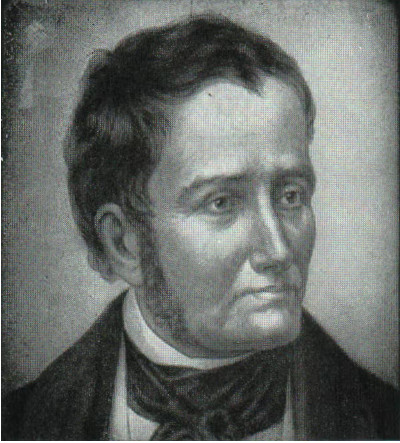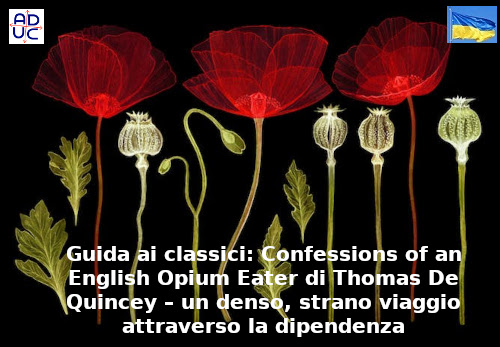But the addict as a cultural figure is more recent: an archetype rejected by modernity. The names are familiar to us: Amy Winehouse, Kurt Cobain, Brett Whiteley, Hunter S. Thompson, Jack Kerouac, Charles Baudelaire, Samuel Coleridge, Thomas De Quincey. Indeed, it was De Quincey’s Autobiographical Confessions of an English Opium Consumer, published in 1821, that first gave us this archetype.
The addict can be a seductive figure. On the one hand, we can admire it. We live in prosperous times, where so much is possible, yet many of us are shackled to our oppressive lives. The drug addict seems to rebel against everyday life. And for the addicted artist, drugs are a muse.
On the other hand, we feel, if we haven’t experienced it firsthand, that the addict’s life is not a good life. The highs are false and the lows are crushing. And we suspect that drug use may, in fact, be an anti-muse, squandering potential.
Furthermore, there is a bourgeois decadence in the archetypal, fictionalized addict. There is little romance when we think of excessive drug use among the lower classes, whether it be alcoholism in Russia or the opioid crisis in the United States.
This double bound of addiction is well illustrated in the 1996 film Trainspotting (watch this scene), as it is in De Quincy’s Confessions – on several levels. A sick stranger
A sick stranger
De Quincey was a weirdo. Born in England in 1785, he was a sickly child and only grew to five feet. He was a stranger. But he was extraordinarily intelligent. From an early age he loved philosophy, Greek and literature, especially the poetry of Wordsworth. As he tells us in Confessions, one of his schoolmasters observed: “that boy could address an Athenian crowd better than you or I could address an English one.”
De Quincey’s father, a successful merchant, died when De Quincey was young, leaving his family well cared for. Though De Quincey’s life was comfortable, he increasingly resisted the constraints placed upon him by those whom his father had entrusted to administer his inheritance and supervise his education.
Instead of completing his education in Manchester, he escaped to Wales, and then to London, where he spent a few months in poverty. His reflections on this time constitute the first part of the Confessions.
It is unclear why he subjected himself to this misery, but as scholar Barry Milligan writes in his introduction to my copy of Confessions,
De Quincey often displayed a perversely self-destructive streak, a paradoxical drive to prove his will by willingly submitting to miserable circumstances if not actively courting them.
De Quincey, reunited with his family, began his education at Oxford. However, he has not completed his degree. In 1804 he tried opium for the first time – or Laudanum: opium dissolved in alcohol. This was, he says, on the recommendation of a friend to cure “excruciating rheumatic pains of the head and face”. The rest is history.
In the section “The Pleasures of Opium”, we read:
I was necessarily ignorant of the whole art and mystery of opium-taking: and, what I took, I took at every disadvantage. But I took it: – and in an hour, oh! Heavens! How disgusting! What a lifting, from the very depths, of the inner spirit! What an apocalypse of the world inside me! That my pains had vanished, was now a trivial matter in my eyes: – this negative effect was swallowed up in the immensity of those positive effects that had opened before me – in the abyss of divine enjoyment so suddenly revealed.
So much is revealed in these remarks. We see the greatness of De Quincey’s prose, which is sometimes sublime and sometimes too much. And we also see the double benefit of the use of opium: De Quincey talks about the pleasures of opium, yet he talks about revulsion, apocalypse, abyss. Opium would come to dominate De Quincey’s life; although remarkably, he lived to be 74 (no 27 Club for him).
De Quincey spent some years closely associated with Wordsworth and his family, but also often hid from debtors, having squandered his generous inheritance. He aspired to become a great philosopher, but he didn’t make it. Instead, he made a living writing articles. Milligan wryly reflects on the role opium played in De Quincey’s successful and failed life:
Published when De Quincey was 36, Confessions of an English Opium Eater, with the somewhat tragic subtitle “Being an Extract from the Life of a Scholar”, was a great success. De Quincey has also produced numerous essays and other works reflecting on his life and drug use.
Influenza
Many famous figures were influenced by De Quincey. Edgar Allen Poe he drew on Confessions and other works by De Quincey in his story The Purloined Letter (1844). Artificial Paradises (1860) by Charles Baudelaire was a translation and adaptation of the Confessions.
But beyond direct literary influence, De Quincey, as writer Lucy Inglis puts it, he helped establish “drug addiction as a noble artistic enterprise for two generations of the 20th century.” Beat writers William S. Burroughs and Jack Kerouac are good examples.
At the beginning of Confessions, De Quincey says he produced the work as a service “to the whole class of opium users”. I had assumed, when first reading this, that the service would be something along the lines of “don’t do drugs, guys”. But alas, this is not exactly the message that comes from the work.
Dense and strange
Confessions is short: my copy of Penguin is less than 100 pages. Yet it is a dense and strange work: at once a story, a memoir and an essay.
Surprisingly poetic, it is also burdened with too many references to literature and philosophy (this is one of many rabbit holes you might throw down) and digressions and introductions and preliminary observations and explanatory notes — which are mostly hilarious, but perhaps not intentionally. Is this what happens when a scholar crosses paths with an opium addict?
The work begins with some remarks “To the reader”. Then follows the first part: “Preliminary confessions”, in which De Quincey describes his youth and the period spent in London. No opium is consumed in this part.
Most memorable – perhaps in the entire work – is his description of two girls he met in London. The first he met in an empty house where she slept: a “poor friendless child” who was “apparently ten years old” but who “seemed to be gnawed with hunger” so much so that she seemed older than she was. The second was the 16-year-old prostitute, Ann, with whom De Quincey, much to his dismay, lost contact.
The short “Pleasures of Opium” follows, in which De Quincey explains why, in 1804, he first took the drug. He recounts how he took opium—at this stage, only once every few weeks—and went to the opera, and compares opium to alcohol. His description of the appearance and effects of opium is reminiscent of the song Golden Brown by the Stranglers, which talks about heroin use.
De Quincy tells us that opium “is of a dark brown colour.” And that while with wine “the pleasure… always rises, and tends to crisis”, with opium, “once generated, [il piacere] he stays still for eight or ten hours.’
And The Stranglers: “Golden brown, texture like the sun / Lay me down, with my mind she runs / All night long, no need to fight / Never frown with the golden brown.”
“The Pleasures of Opium” ends with a 171-word leviathan of a sentence. In a book with many quotable lines, this is the best; or at least, these are the lines most likely to encourage literate young people to consider whether the injunction to abstain from drugs should, indeed, be heeded. Start:
Oh! Only subtle and potent opium! May you bring a soothing balm to the hearts of the poor and the rich, for wounds that will never heal, and for “the pains that tempt the spirit to rebel”.
The final section is “The Pains of Opium”. It begins in 1812, nearly a decade after The Pleasures. At this point De Quincey went from being an occasional opium user to a daily one.
The Pains, as if to imitate the occasional drug addict himself, drift in and out of the years, inexplicably pausing to discuss, in general terms, De Quincey’s admiration for the British economist david ricardobefore recounting the dreams that haunted his sleep.
“Sometimes it felt like I lived 70 or 100 years in one night,” he writes. And there is a dream about Ann.
But for me, the moral of the story is revealed in the following remarks from The Pains:
The opium-eater loses none of his moral sensibilities, or aspirations: he longs and ardently longs, more than ever, to accomplish what he believes possible, and feels that he is enforced by duty; but his intellectual understanding of what is possible infinitely surpasses his power, not only of execution, but of power to attempt.
As I read, this is where Afroman’s 2000 classic, Why I Got Highre-enters my consciousness from deep-storage.
The song explains how Afroman, himself had many aspirations, but failed to fulfill them, because he got high.
(Jamie Q Roberts – Lecturer in Politics and International Relations, University of Sydney -, su The Conversation del 31/01/2023)
the association does not receives and is against public funding (also 5 per thousand)
Its economic strength are inscriptions and contributions donated by those who deem it useful
DONATE NOW
